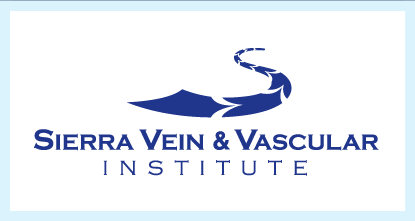Vein Closure
Varicose veins are not just a cosmetic problem and, therefore, their treatment is covered by insurance. Some patients mistakenly do not seek treatment and wait until complications such as clots, ulcers or bleeding develop. There is now an easy solution that is also covered by most medical insurance providers. Radiofrequency Thermal Ablation or Chemical Ablation is a clinically proven, minimally invasive office-based procedure that treats varicose veins and their underlying cause, venous reflux. Radiofrequency Thermal Ablation or Chemical Ablation uses radiofrequency energy or a chemical adhesive to close off the leaky veins in order to eliminate varicose veins. During Radiofrequency Thermal Ablation or Chemical Ablation, a tiny catheter placed into the vein delivers a form of light energy to the vein wall or a chemical adhesive. This energy or chemical adhesive causes collagen in the vein to change shape in order to close the vein. This elegant procedure is completed in less than an hour with minimal or no discomfort. Patients can drive themselves to and from our facility; and return to work or normal activity the same day. Clinical studies have shown outstanding safety, efficacy, and patient satisfaction. Patients are delighted with symptom relief and cosmetic improvement, 98% of whom would recommend Radiofrequency Thermal Ablation or Chemical Ablation to a friend.
Radiofrequency Thermal Ablation or Chemical Ablation Closure Procedure
Radiofrequency Thermal Ablation or Chemical Ablation procedure, an alternative treatment option to traditional vein stripping surgery, brings state-of-the-art technology to an age-old disease.
The Radiofrequency Thermal Ablation or Chemical Ablation procedure is performed on an outpatient basis. Using ultrasound guidance, the catheter is positioned into the diseased vein through a small opening in the skin. The slender catheter delivers radiofrequency (RF) energy which heats the vein wall or chemical ablation which applies a medical adhesive. As the vein wall is heated and the catheter is withdrawn, the collagen in the vein wall shrinks and the vein closes or the medical adhesive sticks the walls of the vein together. Once the diseased vein is closed, blood is re-routed to other healthy veins to get back to the heart.
Following the procedure, a simple bandage is placed over the catheter insertion site and the leg. You may be encouraged to walk at frequent intervals and to refrain from prolonged standing and strenuous activities for a period of time.
Patients who undergo the Radiofrequency Thermal Ablation or Chemical Ablation procedure typically resume normal activities within a day.
Highlights of the Closure procedure
Relief of symptoms
Resume normal activity within a day
Outpatient procedure
Local or general anesthesia
Good cosmetic outcome with minimal to no scarring, bruising or swelling
Compression Stockings
The bandages applied after the Radiofrequency Thermal Ablation or Chemical Ablation are generally removed in 48 hours. The bandages applied after sclerotherapy are generally removed the next morning. Compression stockings should be worn following removal of the bandages and their use is an important component of varicose vein treatment strategy.
After Radiofrequency Thermal Ablation or Chemical Ablation, the use of compression stockings is encouraged during the day, particularly during working hours when there is a lot of standing. Stockings can be removed just prior to dinnertime and need not be worn at night during sleep.
Click to view a short video about Radiofrequency Thermal Ablation Procedure
Click to view a short video about VenaSeal Closure procedure
The Radiofrequency Thermal Ablation or Chemical Ablation procedures treat leg veins in the superficial and perforating systems that have venous reflux, the underlying cause of varicose veins. Patients with thrombus (blood clots) in the vein segment to be treated should not have the Radiofrequency Thermal Ablation or Chemical Ablation procedures. Individual results may vary based on each patient’s condition. As with all medical procedures, potential risk and complications exist including vessel perforation (when the catheter punctures the vein wall), thrombosis, pulmonary embolism (when a blood clot travels to the lungs), phlebitis (inflammation of the vein), infection, nerve damage, arteriovenous fistula (an abnormal connection between an artery and a vein), hematoma (bruising), and skin burn. Consult with a physician to receive more information).



